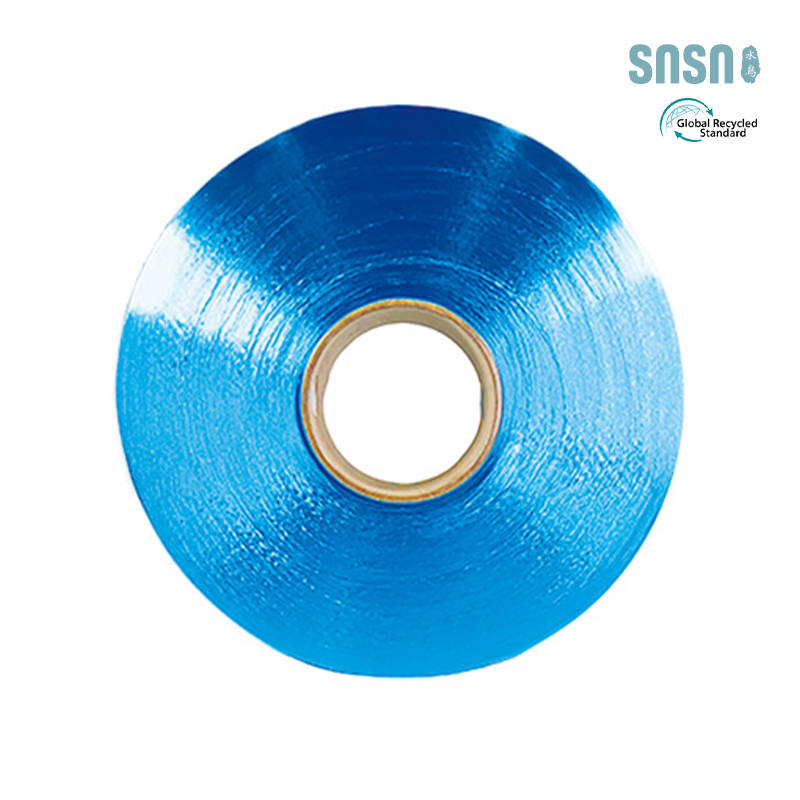Introduction to Synthetic Yarns
Synthetic yarns form the backbone of modern textile manufacturing. Among the various types, POY (Partially Oriented Yarn) and FOY (Fully Oriented Yarn) represent two fundamental categories with distinct characteristics and applications. Understanding their differences is crucial for manufacturers, designers, and textile engineers.
POY and FOY are both synthetic continuous filament yarns primarily made from polyester, but they differ significantly in their molecular orientation, mechanical properties, and manufacturing processes. These differences determine their suitability for various textile applications.
What is POY? (Partially Oriented Yarn)
POY is an intermediate product in the manufacturing of polyester yarns. It's created through a high-speed spinning process where polymer chips are melted, extruded through spinnerets, and then cooled to form filaments. The "partial orientation" refers to the molecular structure of the yarn, where polymer chains are aligned to some degree but not fully crystallized.
Key Characteristic: POY has low orientation and crystallinity, making it suitable for further processing like draw-texturing to create textured yarns.
What is FOY? (Fully Oriented Yarn)
FOY, also known as Fully Drawn Yarn (FDY), undergoes complete orientation during its manufacturing process. The yarn is drawn to its maximum possible extension at an elevated temperature, resulting in a highly oriented molecular structure with significant crystallinity.
Key Characteristic: FOY has high tenacity, low elongation, and excellent dimensional stability, making it ideal for applications requiring strength and durability.
Manufacturing Processes
1. Polymer melting
2. Extrusion through spinnerets
3. High-speed winding (3000-3500 m/min)
4. Partial orientation achieved
1. Polymer melting
2. Extrusion through spinnerets
3. Drawing at elevated temperature
4. Low-speed winding (1200-1600 m/min)
Comparative Analysis: POY vs FOY
| Characteristic | POY | FOY |
| Full Name | Partially Oriented Yarn | Fully Oriented Yarn |
| Molecular Orientation | Partial orientation | Full orientation |
| Crystallinity | Low (20-30%) | High (40-50%) |
| Tenacity (g/denier) | 2.0 - 2.5 | 4.0 - 7.0 |
| Elongation at Break (%) | 100 - 180 | 15 - 30 |
| Production Speed | High (3000-3500 m/min) | Moderate (1200-1600 m/min) |
| Further Processing Required | Yes (draw-texturing) | No (ready for use) |
| Dimensional Stability | Moderate | Excellent |
| Primary Applications | Textured yarns, knitting | Woven fabrics, industrial uses |
Properties and Performance Characteristics
The fundamental differences in molecular structure between POY and FOY result in distinct performance characteristics:
Mechanical Properties: FOY has significantly higher tensile strength and modulus than POY due to its fully oriented structure. However, POY has much higher elongation, making it more suitable for texturing processes.
Thermal Behavior: FOY exhibits better dimensional stability at elevated temperatures because of its higher crystallinity. POY undergoes significant shrinkage when exposed to heat, which is utilized in texturing processes.
Dyeability: The less crystalline structure of POY allows for better dye penetration compared to FOY. However, FOY provides more consistent dyeing results due to its uniform structure.

Applications in the Textile Industry
POY Applications
- Raw material for draw-textured yarn (DTY)
- Knitted fabrics
- Staple fiber production
- Weft yarns in weaving
- Specialty textiles requiring bulk
- Interlining fabrics
- Automotive textiles
FOY Applications
- High-quality woven fabrics
- Shirting and suiting materials
- Home textiles (curtains, upholstery)
- Industrial fabrics
- Sewing threads
- Technical textiles
- Medical textiles
Selection Criteria for Manufacturers
When choosing between POY and FOY, manufacturers consider several factors:
End Product Requirements: For fabrics requiring drape, softness, and bulk (like apparel), POY-based DTY is preferred. For applications needing strength and dimensional stability (like home textiles), FOY is more suitable.
Production Economics: POY production is faster and more economical as an intermediate product, while FOY requires slower processing but produces ready-to-use yarn.
Processing Capabilities: Manufacturers with texturing facilities typically use POY, while those focused on weaving often prefer FOY to streamline production.
Industry Trends and Future Developments
The textile industry continues to evolve POY and FOY technologies to meet changing demands:
Eco-friendly Variants: Development of recycled POY and FOY from PET bottles and textile waste is gaining momentum, reducing environmental impact.
Functional Enhancements: Both yarn types are being engineered with properties like moisture management, UV resistance, and antimicrobial capabilities.
Production Innovations: Advances in spin-draw technology are creating hybrid processes that combine the benefits of both POY and FOY manufacturing.
Conclusion
POY and FOY serve distinct but complementary roles in the textile manufacturing ecosystem. POY's partial orientation makes it ideal for further processing into textured yarns, while FOY's full orientation provides excellent mechanical properties for direct application in high-performance fabrics.
Understanding the differences between these yarn types enables manufacturers to optimize their production processes and select the most appropriate material for specific end-use applications. As textile technologies advance, both POY and FOY continue to evolve, offering enhanced performance and sustainability for the global textile industry.

 English
English عربى
عربى Türk
Türk Español
Español



















